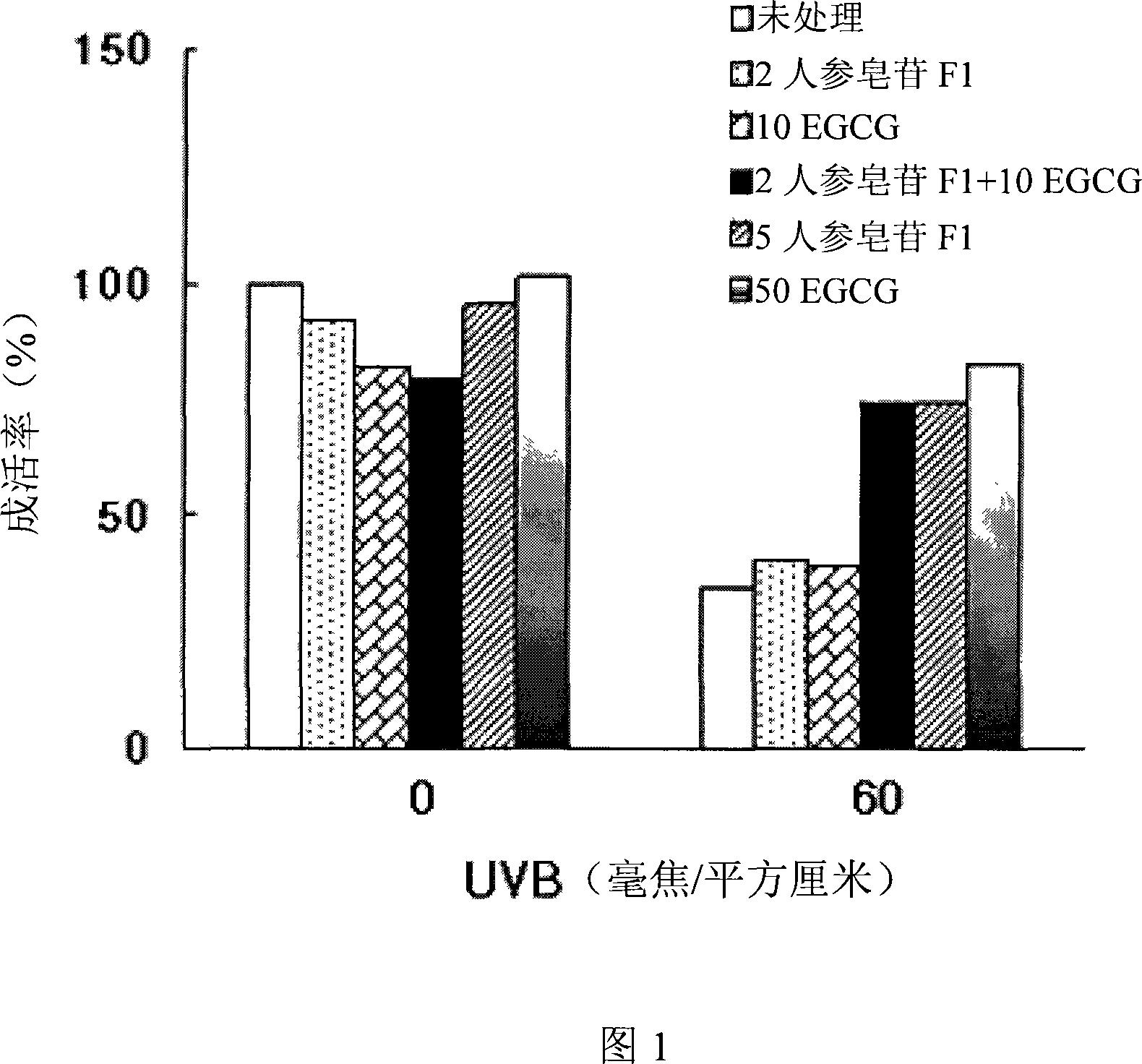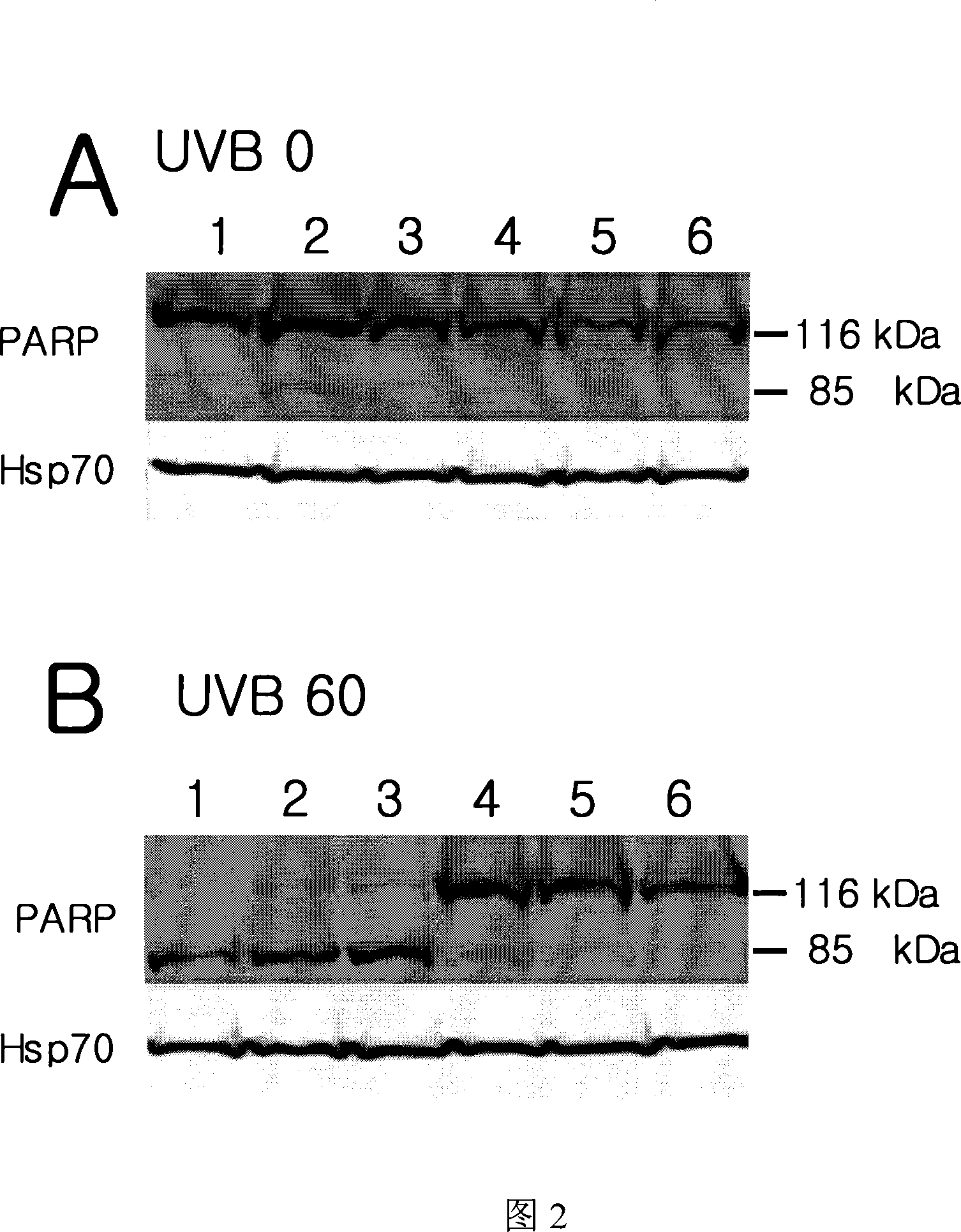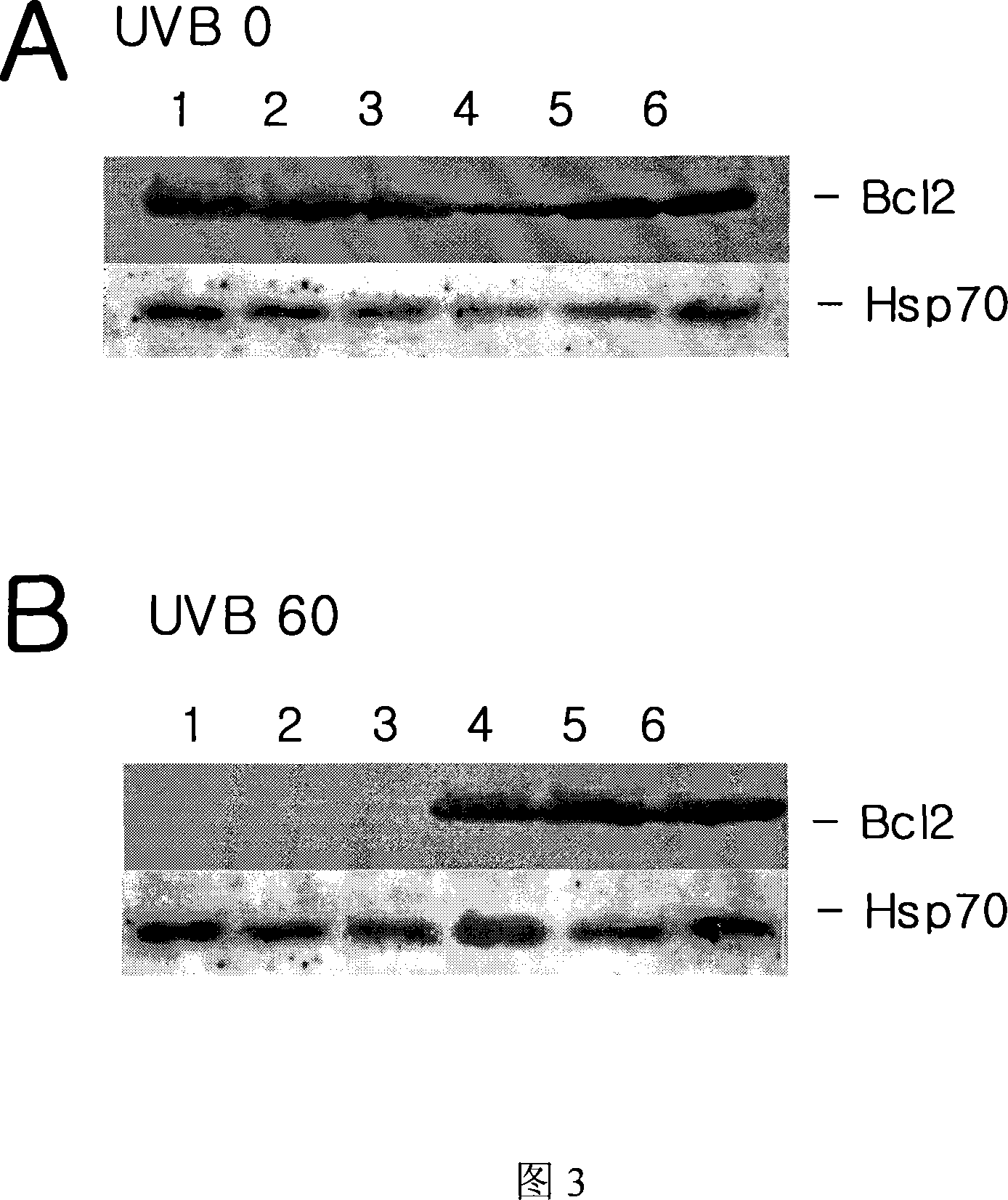Composition containing ginsenoside F1 and EGCG for preventing skin damage
A technology of gallic acid ester and ginsenoside, which is used in skin care preparations, medical preparations containing active ingredients, skin diseases, etc.
- Summary
- Abstract
- Description
- Claims
- Application Information
AI Technical Summary
Problems solved by technology
Method used
Image
Examples
preparation example Construction
[0033] The preparation of the ginsenoside of reference example 1 purification
[0034] 4 liters of methanol containing distilled water was added to 2 kg of red ginseng (KT&G, six-year-old red ginseng) and refluxed three times, then left standing at 15° C. for 6 days. The crude extract was filtered through filter paper and the residue and filtrate were separated by centrifugation. The filtrate was concentrated under reduced pressure. The concentrate was suspended in distilled water and extracted five times with 1 L of ether to remove the pigment. The aqueous part was extracted three times with 500 ml 1-butanol. The resulting 1-butanol fraction was treated with 5% KOH and washed with distilled water, then concentrated under reduced pressure. The obtained 1-butanol extract was dissolved in a small amount of methanol and a large amount of ethyl acetate was added. The obtained precipitate was dried to obtain 70 g of purified ginsenoside.
[0035] Reference Example 2 Preparatio...
Embodiment 1
[0037] The combined treatment of embodiment 1 ginsenoside F1 and EGCG anti-apoptotic effect in HaCaT cells:
[0038] Step 1 Cell Lines and Cell Culture
[0039] The human keratinocyte HaCaT cell line was provided by Dr. N.E. Fusenig (DeutschesKrebsforschungszentrum (DKFZ), Heidelberg, Germany) and cultured in Dulbecco's modified Eagle's medium (DMEM) (Dulbecco's modified Eagle's medium) supplemented with 10% fetal bovine serum. 'smedium, Gibco 1210-0038). Culture at 37 °C in the presence of 5% CO 2 Incubation in moist air.
[0040] Step 2 Inhibition of UV-induced apoptosis in HaCaT cells by combined treatment with ginsenoside F1 and EGCG
[0041] Treat the cell line cultured in step 1 with trypsin to obtain a single-cell suspension, and plate 2 × 10 per well 5 The cells were seeded on 6-well microplates and cultured for 24 hours. Next, the medium was freshly replaced with serum-free DMEM and the cells were cultured for an additional 24 hours. Each well of the microplate ...
Embodiment 2
[0046] Embodiment 2 uses ginsenoside F1 and EGCG joint treatment to the inhibition of PARP proteolysis:
[0047] Step 1 Cell Lines and Cell Culture
[0048] The cell lines and their cultures used in this experiment were the same as those used in Step 1 of Example 1.
[0049] Inhibitory effect of combined treatment with ginsenoside F1 and EGCG in step 2 on UV-induced PARP cleavage
[0050] Treat the cell line cultured in step 1 with trypsin to obtain a single-cell suspension, and plate 2 × 10 per well 5 The cells were seeded on 6-well microplates and cultured for 24 hours. Next, the medium was freshly replaced with serum-free DMEM and the cells were cultured for an additional 24 hours. The microplates were then treated with 2 μM ginsenoside F1; 10 μM EGCG; a combination of 2 μM ginsenoside F1 and 10 μM EGCG; 5 μM ginsenoside F1 and 50 μM EGCG, respectively. Ginsenoside F1 was dissolved in 100% ethanol at a 1 / 1000-fold concentration relative to the medium, and EGCG (Sigma) w...
PUM
 Login to View More
Login to View More Abstract
Description
Claims
Application Information
 Login to View More
Login to View More - R&D
- Intellectual Property
- Life Sciences
- Materials
- Tech Scout
- Unparalleled Data Quality
- Higher Quality Content
- 60% Fewer Hallucinations
Browse by: Latest US Patents, China's latest patents, Technical Efficacy Thesaurus, Application Domain, Technology Topic, Popular Technical Reports.
© 2025 PatSnap. All rights reserved.Legal|Privacy policy|Modern Slavery Act Transparency Statement|Sitemap|About US| Contact US: help@patsnap.com



